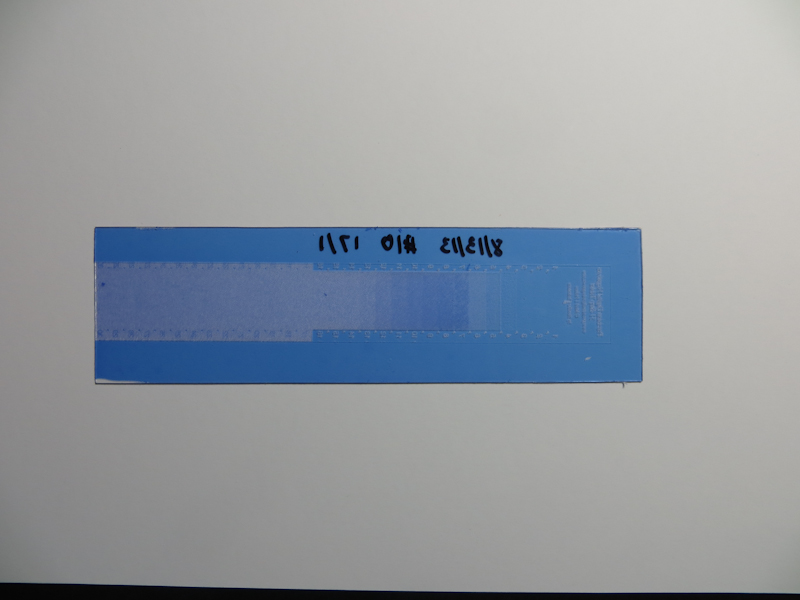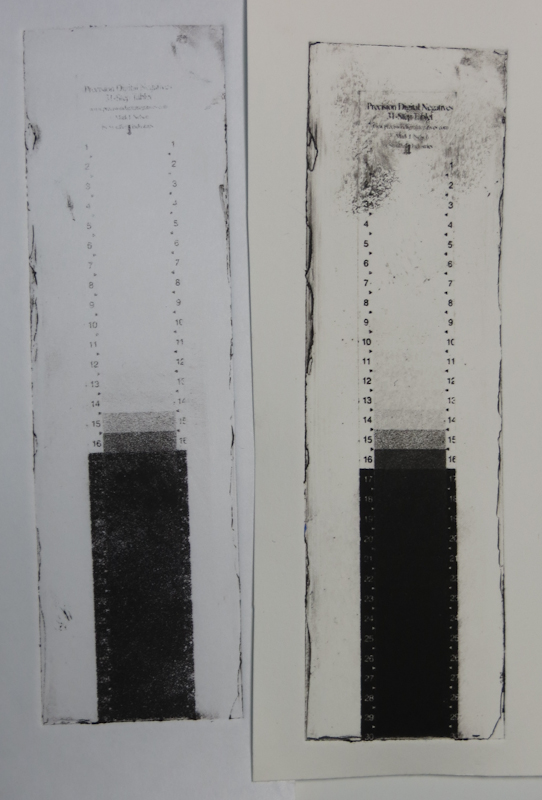Tonight I tried printing my ImagOn test plates on damp Rising Stonehenge and found that I was able to get full ink density in my prints. I am still somewhat puzzled as to why I can get full density on dry paper using SolarPlate, but not ImagOn. In addition to this difference, I found that ImagOn has much higher contrast when compared to SolarPlate. ImagOn seems to do a great job reproducing the aquatint structure in the matrix and it seems capable of producing very fine detail. The ImagOn emulsion does seem more delicate than SolarPlate, and it is very easy to accidentally scrape off some of the texture. It is also easy to chip the edges of the plate. Photos below document my observations.

This ImagOn film is laminated onto a piece of transparent PETG plastic. The transparent plate has a number of advantages – you can easily see inking problems and it offers opportunities for easy, but precise registration when printing with the plate on top of the paper.

For this session, I made exposures of a Stouffer step wedge after first exposing the aquatint screen.

This plate used my best aquatint exposure, followed by an exposure of the Stouffer step wedge. A decent aquatint pattern has developed in the matrix.

I am puzzled by the blue globs of emulsion sitting on top of the aquatint matrix on the left side of the image in steps 7 and 8. I could try rubbing them off during development, but am worried that I might damage the matrix.

The test strip on the left is printed on the smooth side of dry Masa paper. The strip on the right is printed on damp Stonehenge. Clearly it is possible to print a maximum density black using ImagOn and damp paper. I am puzzled as to why I can get maximum density from SolarPlate on dry paper.

The test strip on the left is SolarPlate on the smooth side of dry Masa. The strip on the right is ImagOn printed on damp Stonehenge. The ImagOn seems to hold a finer grain in the aquatint, but it is very contrasty, compared to the SolarPlate. This is a case where the Precision Digital Negatives approach should really shine. My guess is that it will recommend a really low UV density ink like red in order to control the contrast.


